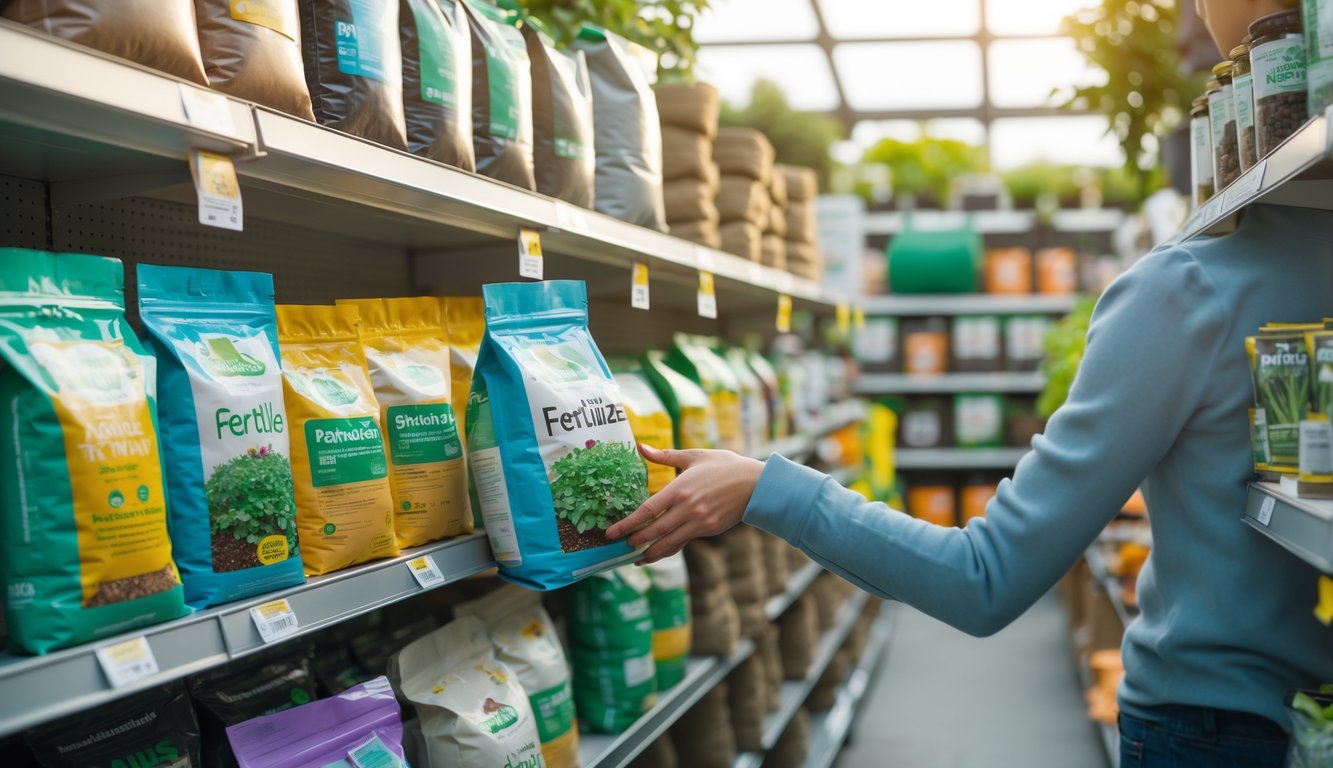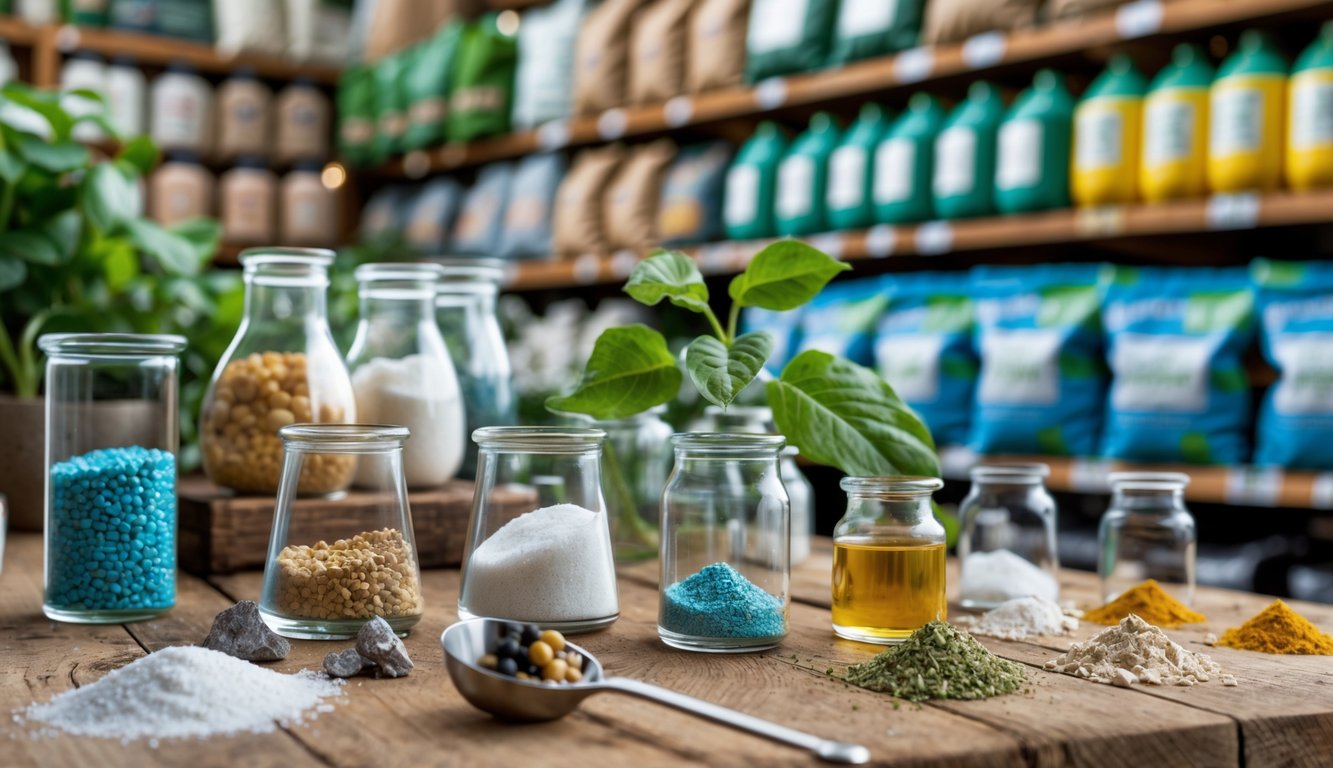
Understanding Fertilizer Types and Their True Costs
Sticker shock, every single aisle. Prices look fine, then suddenly fertilizer tags multiply. Sometimes it’s the chemicals, sometimes it’s packaging, sometimes I think they just make up numbers. The cashier never wants to explain compost versus synthetic when there’s a line behind you.
Synthetic Fertilizers Versus Organic Fertilizers
The bag says “20-20-20”—nitrogen, phosphorus, potassium. Am I supposed to know how much my tomatoes need? Synthetic fertilizers are usually way cheaper up front—some lawn formulas are $25 for 40 pounds, supposedly enough for a season. Easy, right? But then, hidden costs: runoff fines (my neighbor ratted me out last spring), extra watering, salinity headaches.
Organic stuff—composted manure, bone meal, fish emulsion—always costs more at checkout. Bought “real” fish emulsion once and my wallet cried. And it’s not just about being “green”—application rates are nuts, soils drain slower, and hauling it isn’t free. I heard an extension agent say organic blends can cost 30-50% more per pound of nitrogen, if you can even track that (spoiler: you can’t, not after labor). Price tags say “environmentally friendly,” but that free community compost pile? Smells like a crime scene.
Popular Fertilizer Ingredients
NPK, then they sneak in urea, ammonium sulfate, “biosolids.” Reading labels feels like studying for a chemistry midterm. You’d think fertilizer ingredients were classified secrets. Everyone brags about bone meal or fish emulsion, but nobody agrees on how much phosphorus is too much. Nitrogen percentages make my head spin, and if you’ve ever tried to calculate the real cost per pound, you know “cheap” fertilizer gets expensive fast when you factor in how much you actually use.
My go-to hack? Straight compost. No NPK label, just vibes. Sometimes the bag brags about “microbial activity”—which is code for “it’ll rot, eventually.” Manure, fish emulsion, bone meal: you either get haunted by weird smells or end up buying filtered water for your plants. No garden store guy has ever explained why prices swing so much for nearly identical ingredients. And I once bought “organic” blood meal that still listed synthetic stabilizers in print so tiny I needed a magnifying glass.
Impact of Raw Material Prices on Fertilizer Fees

You can’t blame the weather for everything. Want to know why fertilizer is so expensive? Track it back to potash, urea, and anhydrous ammonia. Every time one of those spikes, the whole aisle silently updates its price tags, but store managers just mutter “market volatility” like that explains anything.
Potash, Urea, and Ammonia Price Fluctuations
I wish they’d put the day’s potash price on a chalkboard at checkout. Potash (the potassium kind, not some weird hipster trend) shot up 165% recently, and phosphate tags jumped over 120% for certain blends—pulled those numbers from AHDB and some ag indices, so it’s not just me ranting. That’s not rounding error, that’s a landslide into your shopping cart. The old guy at my store says he’s given up predicting urea prices; ammonia, he claims, “moves faster than a tractor at an auction.”
Urea and ammonia are essential for nitrogen, but their prices ride the rollercoaster of ag demand and feedstock costs—blink and oil or chemical stocks jump, and so does your fertilizer. If a store made a bad bulk order last year? You’re paying for it now. Next season’s prices are already held hostage by last month’s drama—not making this up, it’s in recent industry analysis.
Role of Natural Gas in Fertilizer Production
You ever wonder why a bag of fertilizer costs as much as a cheap dinner out? I used to think “energy surcharge” was just some line on my utility bill, but nope—fertilizer production is basically just burning through natural gas like there’s a secret pipeline straight from your wallet. I mean, 60–80% of the cost? That’s not a typo. Every time gas prices spike, so does the price of every single pound of urea or ammonia. There’s no escape. It’s like the energy bill sneaks into your garden budget, and you can’t even argue with the cashier about it.
I’ve watched executives wave their hands at gas market graphs, trying to convince themselves (and maybe me?) that this is just a “temporary blip.” Sure. But anyone who’s been paying attention since, I don’t know, 2008, knows that fertilizer prices just ride the gas price rollercoaster and never really get off. Nobody at the store is going to tell you why your tomato fertilizer is chained to some pipeline drama in Europe, but if you dig through commodity market breakdowns, it’s right there. Gas volatility drives everything, and you’re left guessing how many BTUs are packed into that “premium nitrogen blend.” (Spoiler: nobody gives you a straight answer.)
Global Supply Chain Factors Affecting Fertilizer Costs
Fertilizer prices are like this endless headache—there’s always some new mess: trade rules, export bans, tariffs, you name it. Energy costs jump, tariffs pop up out of nowhere, shipments crawl across oceans, and suddenly there’s a “hidden fee” on your garden bill that nobody warned you about. It’s like a game of whack-a-mole, but with your money.
Export Restrictions and Import Fees
Go try to buy ammonium nitrate in the spring. Good luck. Governments slap on export bans overnight, and suddenly the stuff vanishes. I remember talking to a guy in Brazil who said his fertilizer imports “basically disappeared” after new tariffs hit, and local prices shot up by a quarter. This isn’t new—every time China or Russia cuts back exports or adds “energy surcharges,” the price just balloons.
And it’s not just the obvious stuff. Ports jam up, paperwork piles on, and the fees stack higher. International Fertilizer Association says all these restrictions and “clarifications” add millions in costs just for storage and moving things around. I heard from an importer in Rotterdam who had to pay for “emergency” storage because his ship was stuck waiting for customs—there goes his entire profit. It’s not just tariffs. It’s every step, every fee, everywhere.